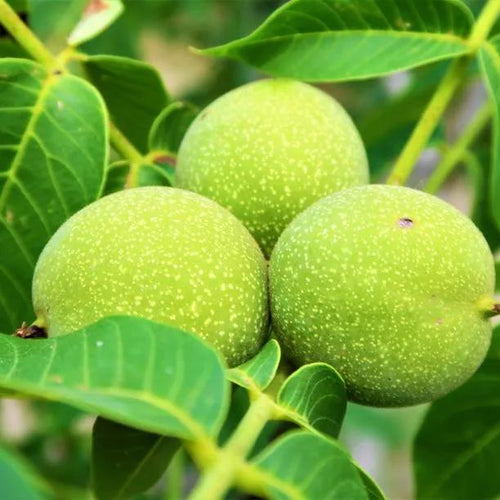Common English Walnut Sapling Trees
The English Walnut tree, Juglans regia, has great autumn colour and makes nuts in the autumn, usually within 10-15 years from planting. If you allow it to grow naturally, it becomes a wide, spreading tree that casts dappled shade and is just the place for a bench and a quiet snooze in the afternoon. If you are stricter and grow it in close company with other walnuts to produce straight trunks without side branches, then the timber is extremely valuable.
The plants on this page are young saplings. You can also buy larger English Walnut trees here. You can also browse our full range of nut trees for sale or see the full variety of fruit trees online.
English Walnut plants are only delivered bareroot, during winter (Nov-March). All of our young trees and shrubs are measured by their height in centimetres above the ground (the roots aren't measured).
History & Trivia
Walnuts are native to Greece, the Middle East and temperate mountain regions in Asia. They were brought to Britain by the Romans.

 Secure, One-Tap Checkout
Secure, One-Tap Checkout
 Hand Picked, Delivered to Your Door!
Hand Picked, Delivered to Your Door! 1 Year Bareroot Guarantee
1 Year Bareroot Guarantee






